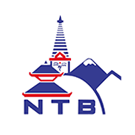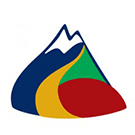The ideal trekking seasons for Upper Mustang are spring (March to May) and autumn (September to November) when the weather is stable and offers stunning views.
Temperature varies by season:
| Month |
Day Temperature |
Night Temperature |
| March-May |
14°C – 20 °C |
-7 – -1 °C |
| June-August |
20°C – 30 °C |
-2°C -0 °C |
| September-November |
12 °C – 20 °C |
-7°C – -2 °C |
| December-February |
0 °C-5 °C |
-20 –25 °C |
Yes, a special trekking permit and ACAP are required to enter Upper Mustang, and these permits can be obtained through Nepal Sanctuary Treks.
Upper Mustang is a restricted region in Nepal situated in the Trans-Himalayan area near the Tibetan border. It was once an independent kingdom with a rich cultural heritage. Learn more about Upper Mustang
: The weather can vary, but generally, it’s cold at higher elevations. Daytime temperatures might be mild, but nights can be freezing. Be prepared for sudden weather changes.
Here’s a table summarizing the temperature variations across different months:
| Month |
Day Temperature (°C) |
Night Temperature (°C) |
| January |
4 |
-8 |
| February |
7 |
-5 |
| March |
11 |
4 |
| April |
11 |
7 |
| May |
15-10 |
0 |
| August |
18 |
2 |
| September |
16 |
2 |
| October |
12 |
0 |
| November |
6 |
-2 |
| December |
6 |
-3 |
The best time for the Makalu Base Camp trek are from March to May and from mid-September to November. These periods are ideal due to clear skies, absence of clouds, vibrant flora in full bloom, and an opportunity to fully revel in the breathtaking beauty of nature.
In regions below 3,000m, cell phone reception is limited. Internet connectivity and mobile network services are available only up to Tashigaun, with no or scarce network beyond that point. Solar power is the primary source of electricity in this area. In case of emergencies, the guides are equipped with satellite phones.
Travel insurance is not included in the trip cost. It’s essential to have comprehensive coverage for potential risks like medical emergencies, evacuation, and trip cancellations. In case of evacuation, contact your insurance company’s 24-hour hotline. Make sure your policy covers helicopter evacuation to a Kathmandu hospital. We strongly advise guests to get insured for a worry-free vacation.
Electric lighting in the rooms is generally unavailable unless the village has hydroelectric power. Solar lighting is commonly used in the dining areas. As a result, charging electronic devices can be challenging in many locations, though some remote areas may offer charging for an additional fee. It’s advisable to bring spare batteries, a power bank, and limit the use of electronic gadgets. For emergencies, our team carries a satellite phone.
Altitude sickness, extreme weather conditions, and challenging terrain are the main risks, making it crucial to be aware of these challenges. Nepal Sanctuary Treks employs experienced and knowledgeable guides who have been with us for many years. We have established communication policies and safety measures, with itineraries designed to include ample acclimatization time. Our trekking crew uses an oximeter to monitor guests’ pulse rates daily and records important health data, including Lake Louise scores. Guides also get in touch with CIWEC International Clinic for expert medical advice when necessary.
The trek typically takes around 18-20 days, depending on the specific route and acclimatization schedule. It’s important to plan for rest days to acclimatize to the high altitude.
To enter Makalu Barun National Park, you’ll need a Makalu-Barun National Park permit. You can obtain this permit in Kathmandu or Tumlingtar. TIMS (Trekkers’ Information Management System) cards are also required and can be obtained in Kathmandu. Nepal Sanctuary Treks team is available to help with acquiring these permits.
The Makalu Barun National Park is home to a variety of wildlife, including snow leopards, red pandas, Himalayan tahr, and various species of birds. While sightings are not guaranteed, it adds to the overall wilderness experience. Please refer to Responsible Travel








